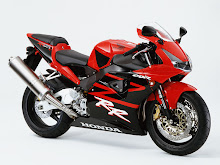
the news big time, not just lately but for the past couple thousand years. People there came up with everything from gunpowder to the compass to paper and ink. They needed lots of paper and ink since the Chinese language consists of 80,000 different symbols. And about that gunpowder. It was discovered by accident while an emperor was looking for the secret to the elixir of life. But it’s no accident that Southern California veteran custom bike builder, Johnny Pag has now brought home from China a new motorcycle, the Spyder 250, that just might take the Ultimate Most Bang for the Buck Award. While the bike is assembled in China, specifically at a 650,000 sq. ft. manufacturing plant near the city of Wenzhou, its design is definitely Made in America, all components drafted up by Johnny to his exacting specifications, and not by e-mail or telephone. Johnny’s a hands-on kind of guy and spent six months out of the year working on location in China on the project. His son, JR, joined him on the long distance work commute and in fact began taking Chinese language lessons.Johnny wanted to design a bike to American standards but have it manufactured and assembled overseas to bring the price down to the bone and make it accessible to anybody. Says Johnny, “We were looking to offer a bike that first time riders can enjoy, for people on a budget, for ladies who want to get off the passenger seat and onto their own wheels, for people who like to sit on a bike with their feet flat on the ground, and for people looking for a full custom bike without the big price tag.”Not to shorten the suspense, but the bike seen here has an MSRP of $3295. We’ll say it again…$3295.One reason for Johnny’s success, where others have merely dreamed of such an endeavor, is the rapport Johnny established with his partners, the Chinese manufacturers. As a result of the mutual trust and respect built on several years of working friendship, the 250 Spyder was born. And the miles of red tape, bureaucracy, government regs and EPA/DOT compliance taken care of as well. It was no small effort at perseverance on Johnny’s part. The actual “birthday” took place this June when the first shipment of full production bikes arrived at the Johnny Pag Motorcycles warehouse in Riverside, CA.This rider/writer was invited over to take the first official bike mag test ride.I was already familiar with the bike’s specs having followed its progress over the previous couple months after learning of its existence when it was awarded Most Unique New Motorcycle at the Indy Expo, and that was with a “rough” prototype. Dealers had caught the scent and were buzzing around the Spyder throughout the event. Moreover they were signing on the dotted line. Something verging on historic was in the air. It had to do with the bike’s design, components and very, very significantly, the price tag. Let’s just say it generated a lot of heat even before the flame paint jobs went on.So like any good bike magazine writer/ predator, I wanted in on the action. So I got my first taste test ride.First impressions. While some of the preliminary photos were good, seeing the bike in person was, well, impressive. You get an immediate sense of a full-sized, full- framed bike (360 lb., 73-inch wheelbase, 1000 lb. rated load) with quality finish and no scrimping.










